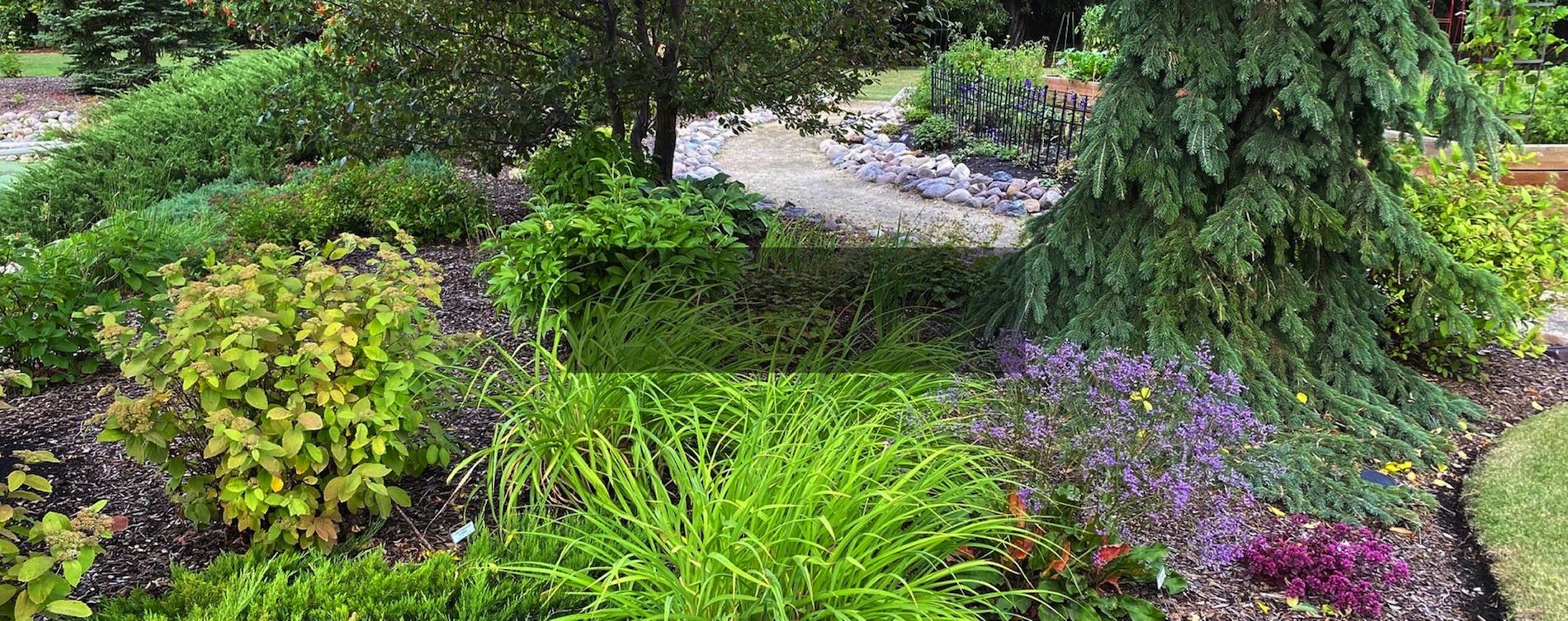Pruning Basics

Early spring is a perfect time to prune; trees and shrubs have yet to leaf out, making it easy to view any branches that require pruning.
Why Should you Prune?
To Control Diseases
- Any branches that are diseased, dying or dead should be pruned out. When pruning these out, cut them down to their base and do not leave a stub. Prune out any crossing branches, or branches that are growing towards the center of the shrub.
- Ensure that diseased plant material is discarded properly, do not compost or mulch. You must disinfect your tools between each cut with a bleach and water solution (1:10, bleach: water).
To maintain the shape and size of a tree or shrub
- Most trees and shrubs can be pruned regularly to prevent them from outgrowing their current space. Keep in mind however, that a tree or shrub should never be pruned back more than 1/3 at a time.
- Do not ‘top’ the tree or shrub – care must be taken to prune individual branches.
To maintain an ornamental shape
- Hedges can be pruned now to maintain their formal shape. Again, keep in mind you cannot remove more than 1/3 of the shrub.
To maintain vigor
- Many plants that stop flowering or fruiting need to be thinned out. An abundance of branches can prevent strong, healthy branches from optimal performance.
How to Prune?

There are various pruning methods, however in every cut, it’s important to always prune properly back to a bud (see image). This will prevent damage to the plant and ensure proper regrowth of the shrub. Proper pruning technique calls for the bud to be cut at an angle just above the bud (1)
- Avoid common mistakes such as cutting the bud at too sharp an angle (2)
- cutting too high above the bud (3)
- or cutting too close to the bud (4)
Pruning Methods
Thinning
- Cut a portion of branches to their base (flush cut) to remove overall # of branches
- Remove crossing/inward growing branches to increase air circulation
Heading Back
- Cutting back stems to promote more side growth, bushiness.
- Can combine heading back and thinning for overall shape
Removing Large Branches

- Make an upward cut from the bottom of the branch, about 5 to 8” from main trunk and about half way through the limb.
- Make the second cut from the top of the branch and about 1” further out from the first cut. Cut all the way through the branch.
- Trim remaining stub up to the branch bark ridge
When to Prune?
Early spring is the perfect time to prune deciduous (plants that drop their leaves in fall) shrubs, trees, roses, etc… See below for special pruning times.
Special Pruning Times
- Birch and Maple – If pruned too early, they ‘bleed’ out sap. Prune after leaves have unfurled.
- Elm – Due to the potential spread of Dutch Elm disease, Elms should be pruned only between October and March (this is when elm bark beetles are NOT active).
- Spring Flowering Shrubs – Shrubs that flower on last year’s growth (lilac, double flowering plum, mock orange) must be pruned right after they finish flowering.
Plants to Prune
Trees – To achieve an attractively shaped specimen, combine thinning and heading back from early stages of growth, up to one-third of the tree each year. This can prevent the need to remove large limbs as the tree ages.
Shrubs – To maintain shape and size, you may thin out up to one-third of old growth per year if necessary. Always cut back to a healthy bud.
Roses – Shrub roses can have up to one-third of growth pruned back each year, to outward facing buds. Dead canes should be pruned entirely to ground level or cut back to live wood. Climbing roses usually bloom on two year old wood so prune lightly only as required.
Evergreens – The purpose of pruning evergreens is to increase fullness, however is rarely required. Removal of lower, skirting branches can be done, however do so only if dead. Removal of these lower branches greatly alters the natural appearance of the tree.
Spruce – To control growth, prune half of the new growth early in the spring when the new growth has extended.
Pine – To control growth, new candles can be cut back by 1/3 to 1/2 once they have fully emerged in spring.
Juniper – Head back new growth by up to one-third each season to encourage lateral growth. Do not shear.
Cedar – Lightly trim only new growth in late spring.
Pruning Tools
Pruning shears, loppers and saws can all be used for pruning. Shears are used for small branches up to one inch in diameter; loppers can be used for branches from 1″ to 2.5″ (depending on the type of lopper). Loppers have leverage and allow for larger branches to be cut. Pruning saws can be used on branches larger than 2.5″, or on all dead branches.
There are two styles of pruning shears available: bypass and anvil. Bypass pruners work with a “scissor” type action, cutting cleanly through the branch. Anvil pruners may crush stems, so are best used for “dirty work” – for example cutting long branches down to size so they can be discarded/composted.





